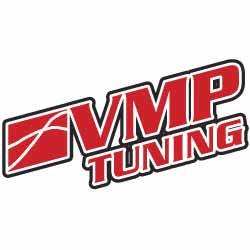I guess it's time to get into the "zen" of chassis tuning!
On a purely philosophical level, if the Mustang chassis was perfect, none of us would mod the thing, but it's designed as a street car, which compromises it's utility in competition settings, like for autocross or road course racing.
First philosophical question: What is the car doing that is making you unhappy? Understeer? Oversteer? Excessive squat/dive under accel and/or braking? Sloppy "feel" at turn-in? Identify the problem, then work out the solution based on that specific complaint.
First off, EVERYTHING in chassis tuning is geared towards keeping as much tire on the ground as possible under competition conditions. Drag guys don't car so much about the fronts, but concentrate on the rear contact patch for launch traction. Corner-carvers concentrate on keeping maximum possible contact patch at all four corners under all conditions. In the end tires are what make the car go, stop, and turn, so that's the start of it all!
Assuming you have your tire issues worked out (biggest, stickiest rubber you can get away with, alignment angles), then you tune the chassis to maximize your contact patch under the different loads you're going to be experiencing.
Springs are your primary tuning point. Going stiffer will reduce body roll, as well as squat and dive, but the drawback is reduced ride comfort, and at the extreme, inability to keep the tires in contact with the ground over uneven terrain (potholes, speed bumps, berms, etc.). With no suspension at all (infinite spring rate), we would have maximum contact area, but only on a pure flat surface. Since there isn't a field of cones or track in the world that's THAT flat, we need to have springs.
Dampers are there simply to keep the springs we've selected from oscillating. Better dampers do a better job of it, but they still need to be tuned to the spring. While you can alter the "tone" of the car with dampers (think comfort, sport or drag shock valving), they still are there to keep the car from pogo-sticking every time you hit a bump.
Next would be anti-roll bars. By stiffening the bar (thicker bar, or shorter moment-arm) you will transfer some of the load from one side of the suspension to the other, using the sprung chassis as the fulcrum. The upside is that you have less body roll, the downside is that the load being transferred may actually REDUCE the total traction available in a corner. Think of it this way: without an ARB, both front tires are contributing to the grip total of the car, but the momentum of the body swinging over is causing other issues. Adding an ARB will reduce the body roll, but will transfer some of the load from the lightly loaded inside tire to the highly loaded outside tire, as it tries to lift to follow the chassis. IF the load being transferred causes the outside tire to exceed 100% of it's possible grip, it will slide, causing understeer. In the rear, the bar would cause oversteer, from the same mechanics. This is one of the reasons that most of the people in this thread that have adjustable bars seem to run them on the "soft" side.
After you have the springs and dampers dialled in, and the ARB set for neutral handling, then you can use tire pressures to fine-tune the balance of the car. Small (like 1lb!) adjustments can have a pretty good effect on the understeer/oversteer balance of the car, but unfortunately, the only way to properly read them is with a pyrometer and a crew to take the readings quickly. The longer a car sits, the less valid the temp readings are. You're looking for roughly even (10* variance from inside to outside) temps, with the center temp being a rough average of inside and outside. That average will tell you that your pressure is correct, and the inside/outside temps will give you a good read on the way the suspension is working for you (or against you!).
Clear as mud, right?


